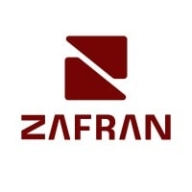


Skybox Security Suite and Vicarius vRx compete in the cybersecurity marketplace, with Skybox having an advantage in feature comprehensiveness and support, while Vicarius vRx offers superior pricing and proactive vulnerability management.
Features: Skybox Security Suite stands out with its advanced threat intelligence, extensive firewall management, and integrated network topology mapping. It provides detailed policy compliance management, beneficial for large enterprises. Vicarius vRx, on the other hand, emphasizes automatic vulnerability detection, prioritization, and effective patching. Its patchless protection uniquely defends systems against zero-day vulnerabilities, providing a robust, proactive solution.
Room for Improvement: Skybox could benefit from simplifying its deployment model and reducing the learning curve associated with its complex setup. Users have also expressed the need for more intuitive interfaces and better third-party integration options. Vicarius vRx might improve by enhancing its reporting features, expanding its integrated patching capability for more applications, and refining its user interface to better accommodate less technical users.
Ease of Deployment and Customer Service: Vicarius vRx features an efficient deployment process that integrates smoothly with existing systems, complemented by responsive and knowledgeable support. Skybox Security Suite provides a comprehensive deployment model, albeit more complex, designed for extensive network security management. While this complexity can be challenging, Skybox's support is robust but may require more time for user adaptation.
Pricing and ROI: Vicarius vRx presents a cost-effective solution, delivering strong ROI via automated vulnerability management and resource savings. Although Skybox Security Suite typically involves higher initial costs, it offers considerable returns through comprehensive security features. Vicarius's competitive pricing appeals with its proactive capabilities, while Skybox validates its expense with expansive security management solutions.



Zafran Security integrates with existing security tools to identify and mitigate vulnerabilities effectively, proving that most critical vulnerabilities are not exploitable, optimizing threat management.
Zafran Security introduces an innovative operating model for managing security threats and vulnerabilities. By leveraging the threat exposure management platform, it pinpoints and prioritizes exploitable vulnerabilities, reducing risk through immediate remediation. This platform enhances your hybrid cloud security by normalizing vulnerability signals and integrating specific IT context data, such as CVE runtime presence and internet asset reachability, into its analysis. No longer reliant on patch windows, Zafran Security allows you to manage risks actively.
What are the key features of Zafran Security?
What benefits can users expect from Zafran Security?
In industries where security is paramount, such as finance and healthcare, Zafran Security provides invaluable protection by ensuring that only exploitable vulnerabilities are addressed. It allows entities to maintain robust security measures while allocating resources efficiently, fitting seamlessly into existing security strategies.
Skybox Security Suite provides comprehensive tools for network and firewall compliance, vulnerability management, and change management, with a focus on risk reduction and network optimization.
Skybox Security Suite supports over 130 vendors with massive scalability and seamless integration, notably with Nessus and Qualys. Its features include network path analysis and offline attack simulation, which enhance management effectiveness. Despite its robust offering, improvements are needed in its UI, web interface, reporting detail, and customization. Automation, orchestration, and device policy provisioning require better support, and integration with tools like Rapid7 could be improved. Enhancements in firewall configuration checks, cloud connectivity, pricing, and marketing awareness are also called for, alongside a transition from Java GUI to a consistent web-based system.
What Are Key Features of Skybox Security Suite?Skybox Security Suite is commonly used in industries requiring strict compliance like finance and healthcare. Firms employ it for firewall audits, enhancing network visibility, and managing configurations against standards such as PCI, ensuring security and policy compliance across expansive networks.
Vicarius vRx supports managed service providers and partners with compliance packages, vulnerability management, and patching for PCI, HIPAA, and cybersecurity needs, focusing on third-party and OS patching, especially on Microsoft Windows.
Vicarius vRx automates patching, virtualized patching, and severity prioritization through its cloud-based, agent-based approach which enhances consistency and flexibility. It includes patchless protection to block malware in unpatched software and features simplified dashboards for integrated vulnerability discovery and remediation. Users appreciate the user-friendly scripting engine, efficient third-party software patching, and real-time cybersecurity updates. Community support and customizable deployment options further add value. However, users find name changes and login difficulties confusing and report tediousness when configuring multiple reports. Desired improvements include virtual environment for patch testing, enhanced network device vulnerability scans, and better Microsoft Endpoint Manager interactions.
What are the key features of Vicarius vRx?Among managed service providers, Vicarius vRx is implemented for updating systems, showing capabilities to customers in lab environments, and securing endpoints through agent-based patching. These providers use vRx to efficiently manage third-party software patching and to maintain cybersecurity standards across industries.
We monitor all Vulnerability Management reviews to prevent fraudulent reviews and keep review quality high. We do not post reviews by company employees or direct competitors. We validate each review for authenticity via cross-reference with LinkedIn, and personal follow-up with the reviewer when necessary.